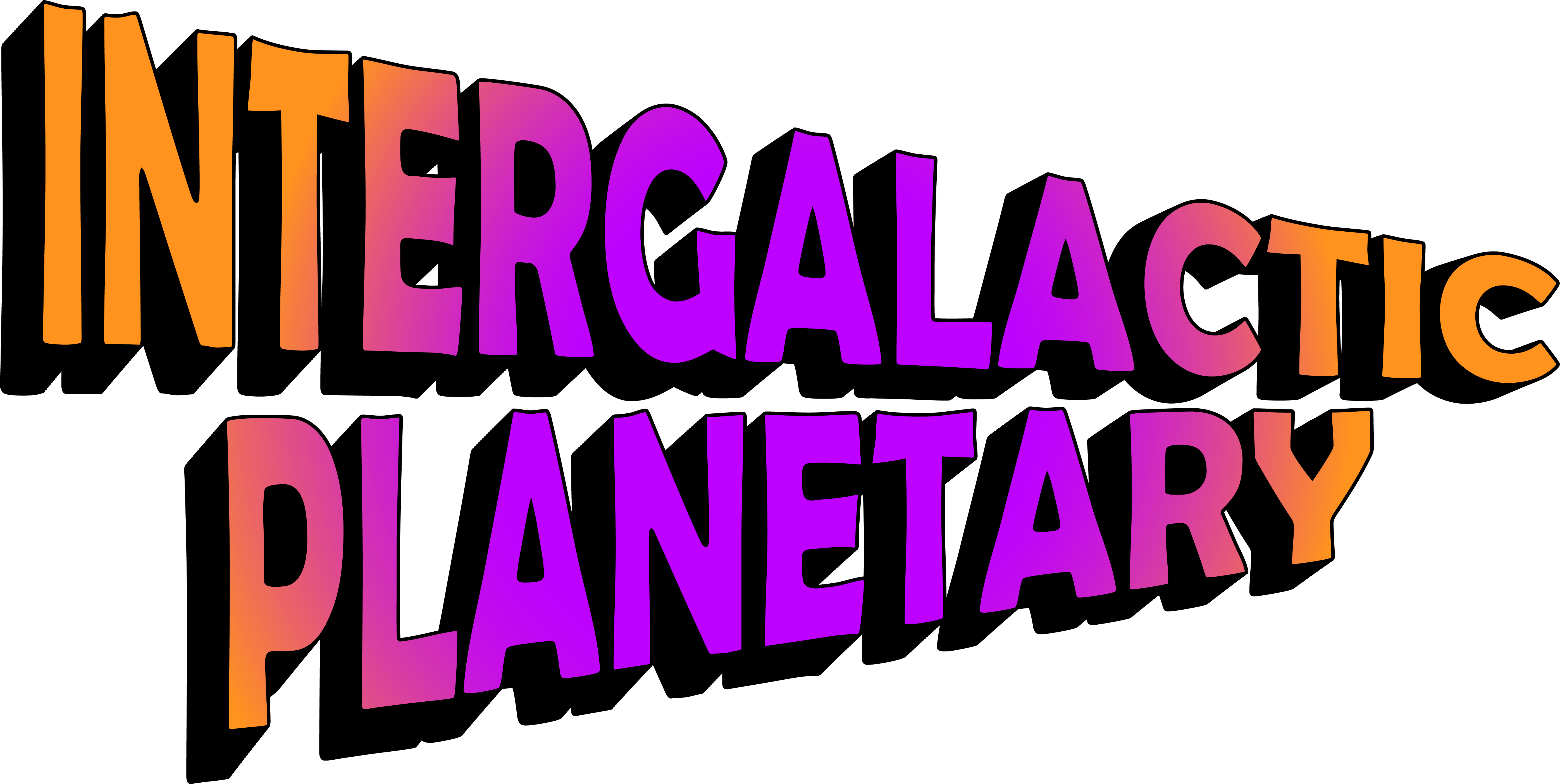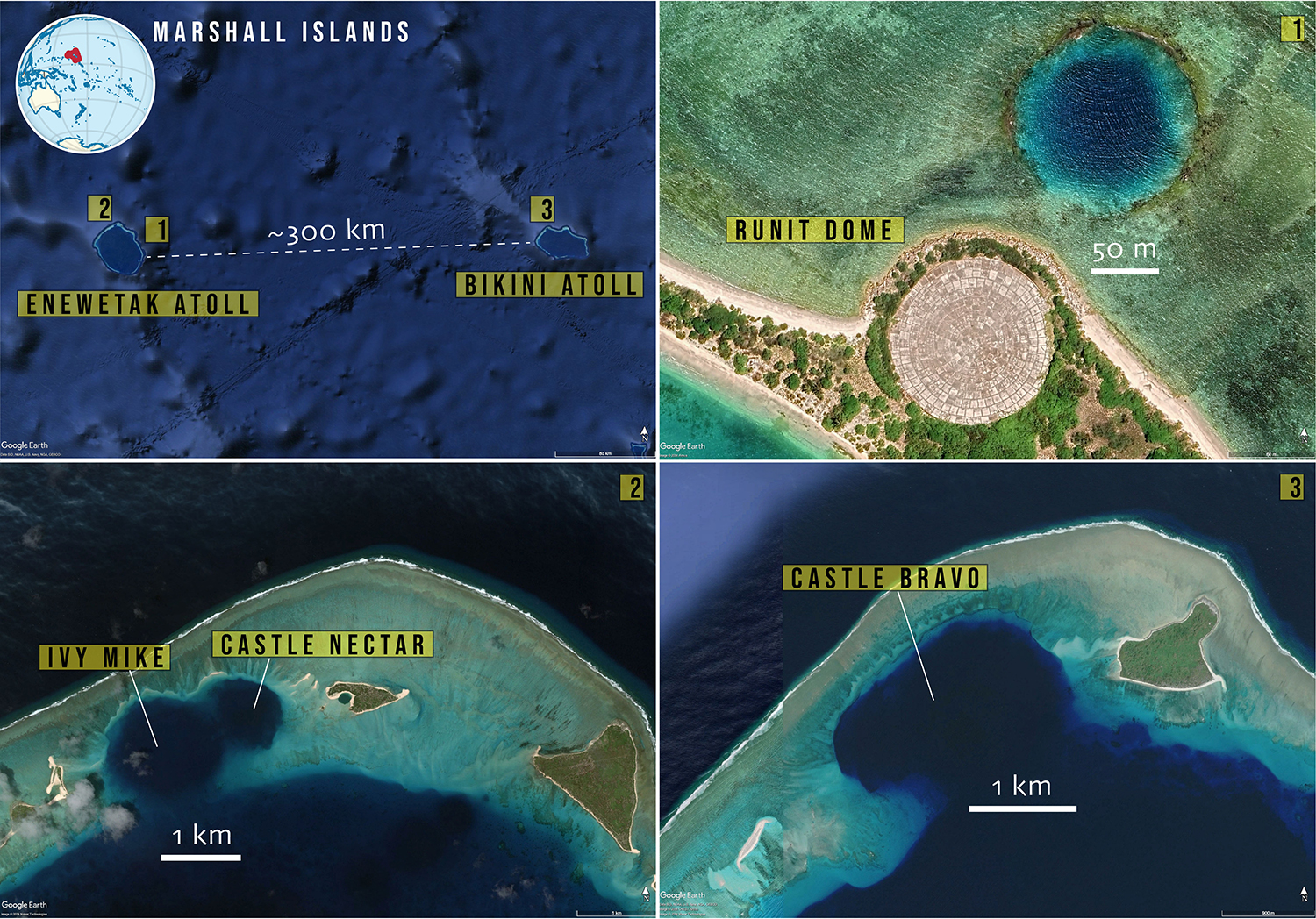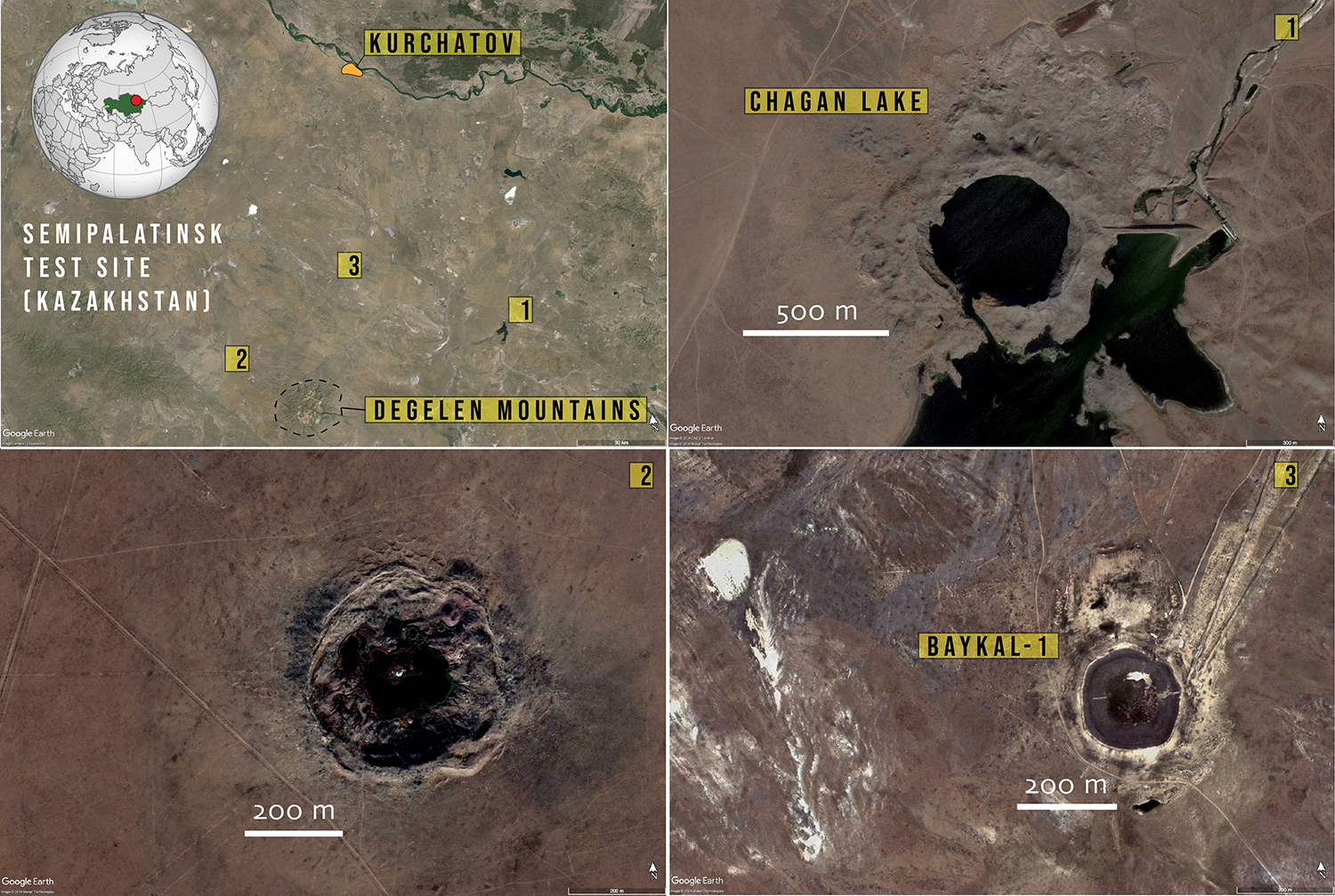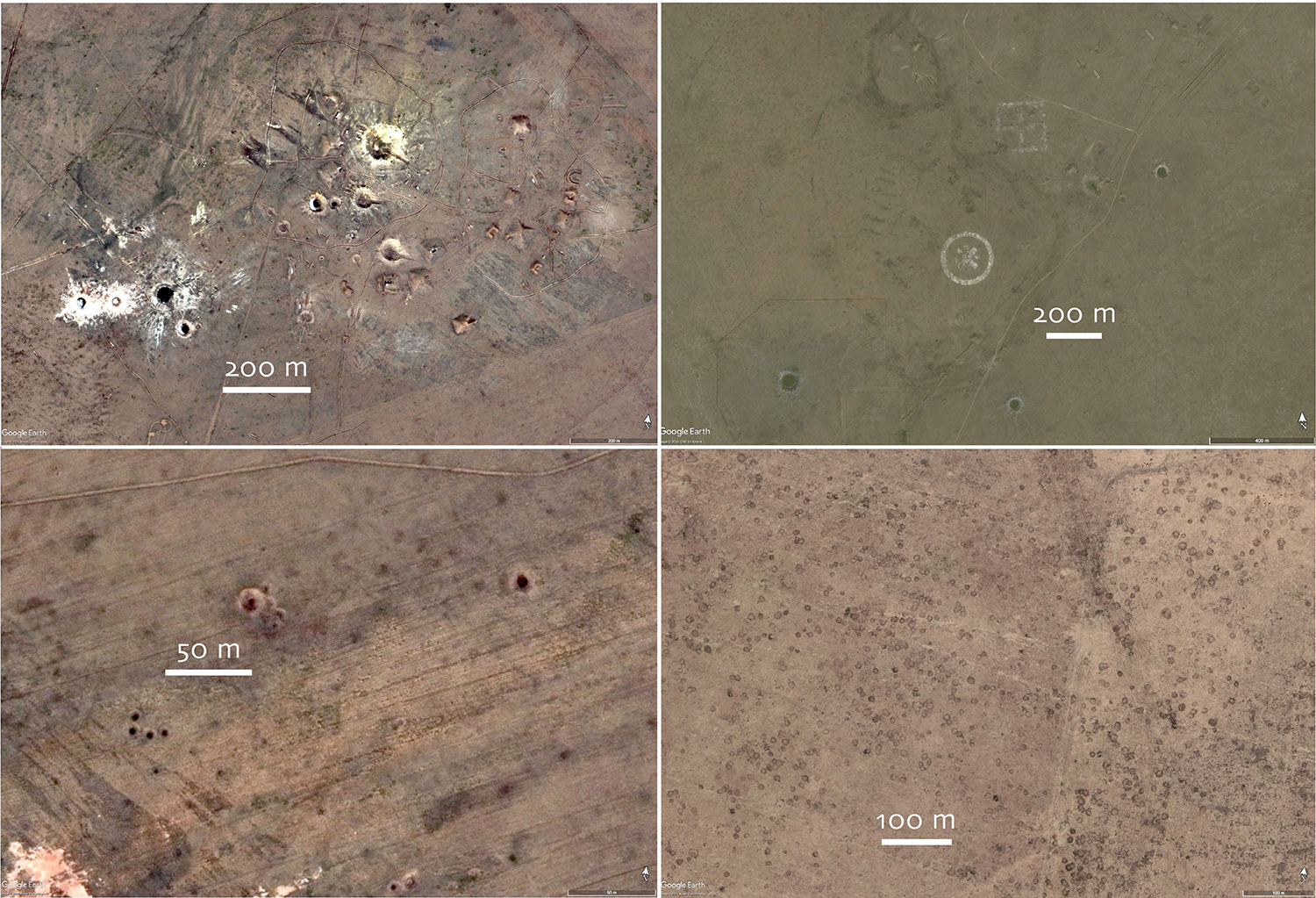

September 1, 2024
Some regions on Earth are extensively pockmarked by craters. But these craters were not formed by meteorite impacts, they are a legacy of decades of nuclear bomb testing (see map). Since 1945 (the year of the first atomic bomb testing, Trinity), more than 2000 nuclear tests have been been conducted by the nuclear-armed states and, from land to seafloor, landscapes hold record of these devastating blasts.
The formation of craters from nuclear weapon testing has spurred part of the theoretical and experimental work on the mechanics of impact cratering in planetary science that had begun in the first half of the 20th century. However, we should never forget that nuclear testing is an activity that goes hand in hand with physical and ecological detstruction, unrooting of native people from their lands, and radioactive contamination of air, soil and water that still have devastating consequence on people. (See end of the page for links to articles)
Bikini Atoll, in the Marshall Islands archipelago, symbolises the dawn of the nuclear age, as the United States chose it as nuclear weapon testing site rigth after the Second World War. In the Bikini Atoll is found the Bravo crater, the largest crater in the island generated by the most powerful thermonuclear weapon tested by the USA. A second island in the archipelago, Enewetak Atoll, was also designated as nuclear test site. On the Enewetak Atoll, the first H-bomb was detenoted and the large Ivy Mike stands as testimony of that event. At the end of the 70's, a concrete done, named Runit Dome, was build on the atoll to deposit radioactive debris.

Many of the craters have been generated by underground blasts, as in 1963 US, Soviet Union and UK signed the Limited Test Ban Treaty, which permitted undergound testing, but included a pledge to refrain from conducting nuclear weapon tests in the atmosphere, underwater or in outer space. Craters created by underground explosions are 'subsidence craters', which means that the craters form by the collapse of the surface terrain into the cavity formed by the blast. The Sedan crater, in the Yucca Flat, Nevada, USA, is the largest human-made crater in the USA and it was created in 1962 as part of a program that aimed to investigate the use of nuclear weapons for mining and other civilian purposes.

Another heavily exploited area for nuclear testing is the Semipalatinsk Test Site in Kazakhstan, the primary testing site for the Soviet Union. In addition to testing nuclear weapons, also the Soviets had their program desgned to use nuclear explotions for earth-moving purposes, such as creating artificial lakes, harbors and canal. In 1965, the Chagan crater was generated by a nuclear blast at the confluence of two rivers, which ponded into the crater forming a lake that is still radioactive.


Here are three articles that discuss the devastating impacts of nuclear weapon testing activities on native populations and communities in the three sites mentioned in this post:
I conclude this post with another suggested article, which reflects on pushing for global disarmamemnt: Nuclear weapons should be relicts of the past.